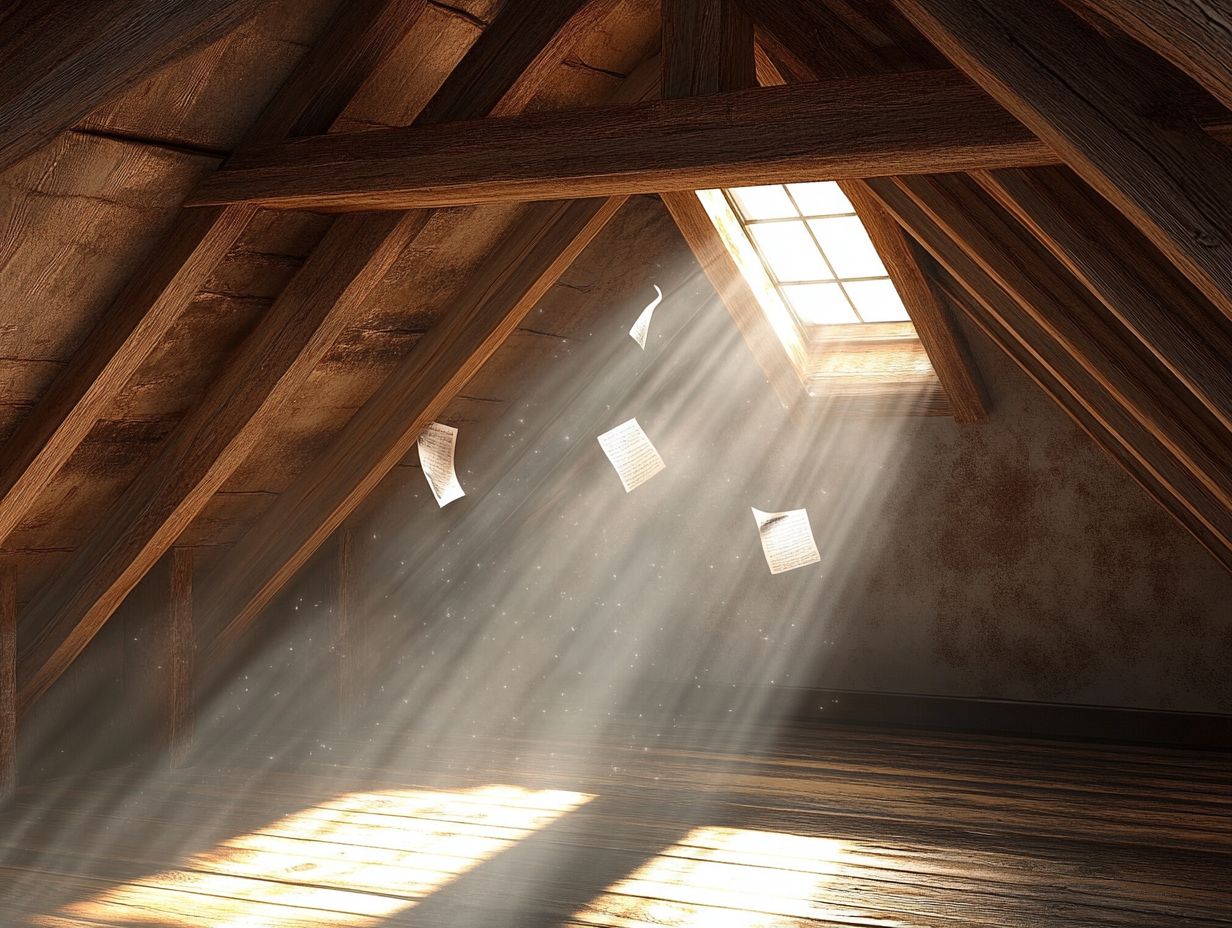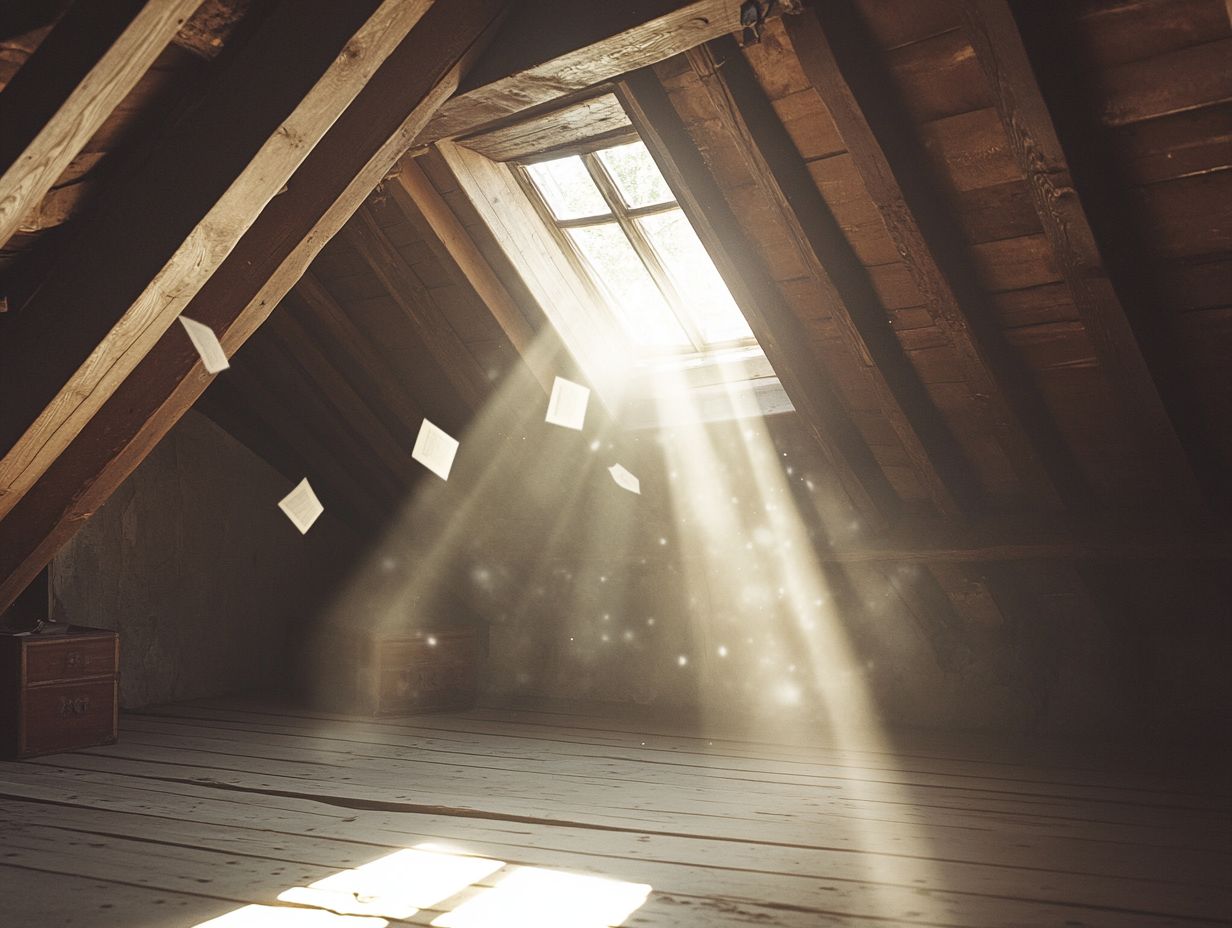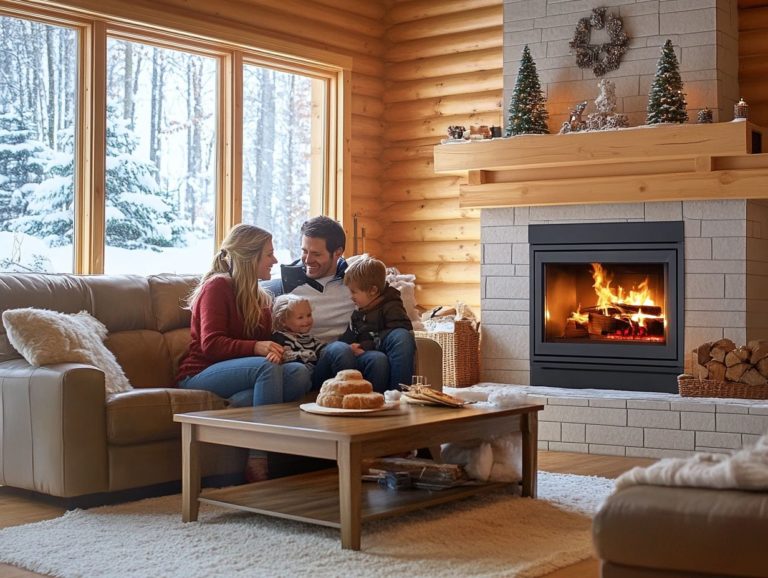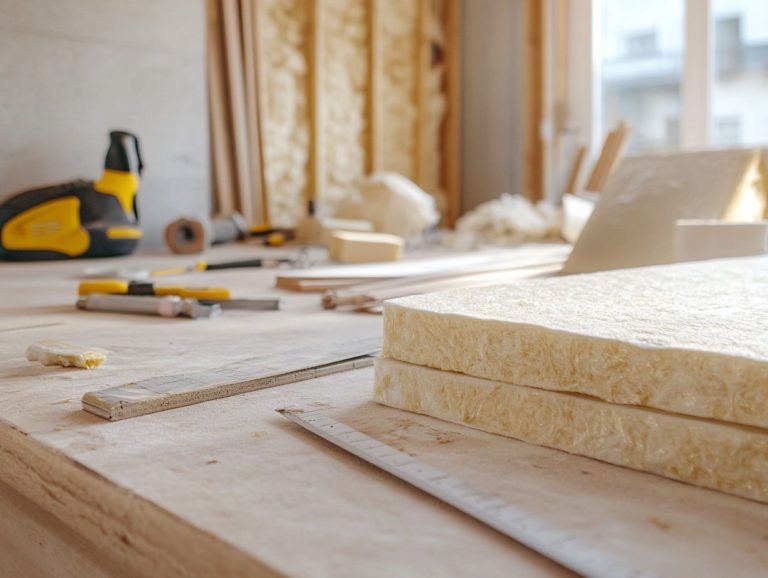The Importance of Attic Ventilation
Let s explore why attic ventilation is not just a technical requirement, but a game-changer for your home s comfort and efficiency!
Attic ventilation is vital for preserving the health and efficiency of your home. When proper ventilation is lacking, attics can turn into sweltering, humid spaces that invite a host of problems, from structural damage to soaring energy bills.
This article delves into the essence of attic ventilation and its significance, highlighting the benefits it provides, identifying signs of poor ventilation, and offering effective solutions alongside essential maintenance tips.
By grasping these aspects, you can cultivate a comfortable and safe living environment.
Contents
Key Takeaways:

Proper attic ventilation is crucial for maintaining a healthy and energy-efficient home. Poor attic ventilation can lead to structural damage, high energy bills, and potential health issues. Regular maintenance and proper ventilation systems are key to ensuring optimal attic ventilation.
Understanding Attic Ventilation
Understanding attic ventilation is essential for optimizing your home s comfort and enhancing energy efficiency. It directly impacts air quality, moisture control, and the overall performance of your roofing system.
When done right, proper attic ventilation regulates temperature fluctuations, minimizes heat buildup, and prevents moisture-related issues such as mold growth and ice damming.
Many homeowners overlook the significance of a well-designed ventilation system, which can extend the lifespan of your roof and lower energy bills.
It s important to work with trusted roofing professionals to create effective natural ventilation solutions that meet industry standards.
What is Attic Ventilation and Why is it Important?
Attic ventilation is the system crafted to circulate air throughout your attic space, ensuring effective heat transfer and minimizing humidity levels by allowing moist air to escape while fresh air flows in.
This system is vital for maintaining the overall health of your home, as it prevents heat build-up during warmer months and mitigates condensation-related issues in cooler seasons.
You can choose between natural ventilation methods, which rely on passive airflow through vents, and mechanical systems systems that use fans to move air actively.
By striking a balance between these approaches, you can significantly reduce moisture accumulation, which would otherwise accelerate wear and tear on your roofing materials.
Neglecting proper ventilation increases the risk of mold formation, potentially leading to costly repairs and threats to structural integrity. Understanding and using effective attic ventilation strategies keeps your home in good shape.
The Benefits of Proper Attic Ventilation

Investing in proper attic ventilation brings a wealth of advantages that elevate your home’s performance. You’ll experience enhanced energy efficiency, protection against structural damage, and a range of health benefits for you and your loved ones.
Improved Energy Efficiency
One of the most significant advantages of ensuring proper attic ventilation is the enhanced energy efficiency it brings. By regulating temperature control within the attic space, you can reduce the strain on your heating, ventilation, and air conditioning systems, ultimately leading to lower energy bills.
This becomes especially crucial during the summer months when excessive heat can accumulate, potentially causing damage to roofing materials like shingles.
Effective ventilation solutions, such as attic fans and comprehensive air sealing techniques, work in harmony to create a cooler atmosphere, preventing moisture buildup and extending the lifespan of your entire roofing system.
By allowing for a steady flow of fresh air, these solutions ensure that hot air escapes swiftly, making your indoor environment more comfortable. Integrating these methods can significantly reduce the risks associated with roof deterioration, enhancing both safety and structural integrity.
Prevention of Structural Damage
Proper ventilation is crucial for safeguarding your home from structural damage. It effectively addresses issues like ice damming, roof damage, and mold growth, which can stem from excessive humidity and inadequate airflow.
When you invest in a well-designed ventilation system, you enable a continuous exchange of indoor and outdoor air. This ensures that moisture is efficiently vented away from critical areas such as insulation layers and roofing materials. Allowing humidity to linger can lead to deterioration of these essential components, compromising the overall integrity of your home.
By maintaining optimal airflow, you can significantly diminish the risk of issues caused by too much moisture. This practice extends the lifespan of your roofs and insulation. Effective ventilation also regulates temperature variations, preventing unnecessary strain on your roofing systems.
It promotes a healthier living environment by minimizing allergens and pollutants. This creates a space where you can truly thrive.
Health Benefits

The health benefits of proper attic ventilation are significant. It plays a key role in enhancing air quality by reducing humid air and preventing condensation that might lead to respiratory problems.
When airflow is inadequate, it creates a perfect breeding ground for harmful mold and allergens. These issues often lurk unnoticed but can quietly undermine your well-being. If moisture builds up in the attic, it sets the stage for mold spores to flourish, worsening allergic reactions and chronic respiratory conditions.
You may find yourself dealing with symptoms like coughing, sneezing, and overall discomfort if you live in a home with poor ventilation. By ensuring adequate airflow, you not only improve indoor air quality but also take proactive measures to protect your family’s health.
Maintaining proper ventilation helps create a comfortable living space.
Signs of Poor Attic Ventilation
Recognizing the signs of inadequate attic ventilation is essential for homeowners. Overlooking these indicators can result in serious repercussions, such as compromised insulation, air quality issues, elevated humidity levels, and significant damage to roofing structures over time.
Identifying Common Problems
Common issues that signify poor attic ventilation include excessive moisture, poor air quality, and compromised roof performance. These problems are often traceable to inadequate airflow and improperly installed insulation baffles, which help direct airflow and prevent insulation from blocking vents.
When ventilation falls short, moisture can build up, leading to problems like mold growth or rot in wooden structures. You might notice musty odors wafting through your home, a clear indicator of trapped humidity.
Physical signs on your roofing materials such as peeling paint or warped shingles further suggest that your roof is feeling the negative effects of moisture. These challenges not only threaten the integrity of your attic but also diminish your home’s overall efficiency.
By prioritizing attic ventilation improvements whether through installing vent systems or ensuring the correct placement of insulation baffles you can effectively tackle these issues. This proactive approach leads to a healthier living environment and extends the lifespan of your roofing materials.
Solutions for Proper Attic Ventilation

Implementing effective solutions for proper attic ventilation is crucial for maximizing airflow and ensuring the longevity of your roofing materials.
Consider installing ridge vents or gable vents to enhance airflow. These actions will foster a healthy living environment within your home.
Take action today to improve your attic ventilation and protect your home!
Types of Ventilation Systems
When it comes to attic ventilation, you have a variety of options to consider. Natural ventilation uses the way hot air rises to maintain airflow, while mechanical ventilation employs devices like attic fans to keep air moving steadily.
Natural ventilation mainly depends on outdoor conditions. It uses vents, windows, or roof openings to bring in fresh air and push out stale air, creating a cooling effect that many find appealing.
In contrast, mechanical systems circulate air actively. They allow for adjustable airflow that can adapt to changing weather conditions.
While natural ventilation often has energy efficiency and lower operational costs, mechanical systems shine in air sealing and control. They effectively address issues like moisture buildup and temperature fluctuations. By understanding the benefits of both options, you can make informed decisions that improve your home’s energy efficiency and indoor air quality.
Maintaining Attic Ventilation
Keeping your attic ventilation in good shape is essential for your home’s long-term health. Regular maintenance checks can prevent problems like air leaks, insulation degradation, and decreased roof performance.
By prioritizing this aspect of home care, you can protect your investment and improve your living environment.
Tips for Regular Maintenance
Regular maintenance of your attic ventilation systems is vital for ensuring optimal air quality and extending the lifespan of your roofing materials. This includes checking your attic fans and making sure there are no obstructions in the way.
Cleaning air intakes is critical for proper airflow and preventing moisture buildup, which can lead to mold or structural damage. Pay attention to humidity levels; excessive moisture can harm insulation and encourage harmful fungi growth.
By consistently performing these important tasks, you ll create a healthier living environment and enhance the efficiency of your home s heating and cooling systems. Taking these simple steps can lead to exciting savings on your energy bills!
Frequently Asked Questions
What is the importance of attic ventilation?
Attic ventilation is crucial for maintaining a healthy and functional home. It allows for proper air circulation, reduces moisture buildup, and helps control temperatures, ultimately extending the life of your roof and home.
How does attic ventilation benefit my home?
Proper attic ventilation helps prevent mold and mildew growth and reduces the risk of structural damage from excess moisture. It also regulates temperature, making your home more energy-efficient and comfortable.
What are the signs of poor attic ventilation?
Some common signs include higher energy bills, musty odors, visible mold or mildew, and roof leaks. If you notice any of these signs, it may be time to improve your attic ventilation.
How does attic ventilation affect my roof?
Poor attic ventilation can cause issues like ice dams, shingle damage, and wood rot. It may also shorten your roof’s lifespan, leading to costly repairs or replacements.
What are the different types of attic ventilation?
The two main types are natural and mechanical. Natural ventilation uses vents like soffits, gable vents, and ridge vents to allow air circulation. Mechanical ventilation uses powered fans to draw air in and out of the attic.
How do I ensure proper attic ventilation?
To ensure proper attic ventilation, maintain a balanced system with both intake and exhaust vents. It’s also essential to have the right amount of ventilation for your attic space and regularly clean your vents to prevent blockages.
Start improving your attic ventilation today for a healthier, more comfortable home!






